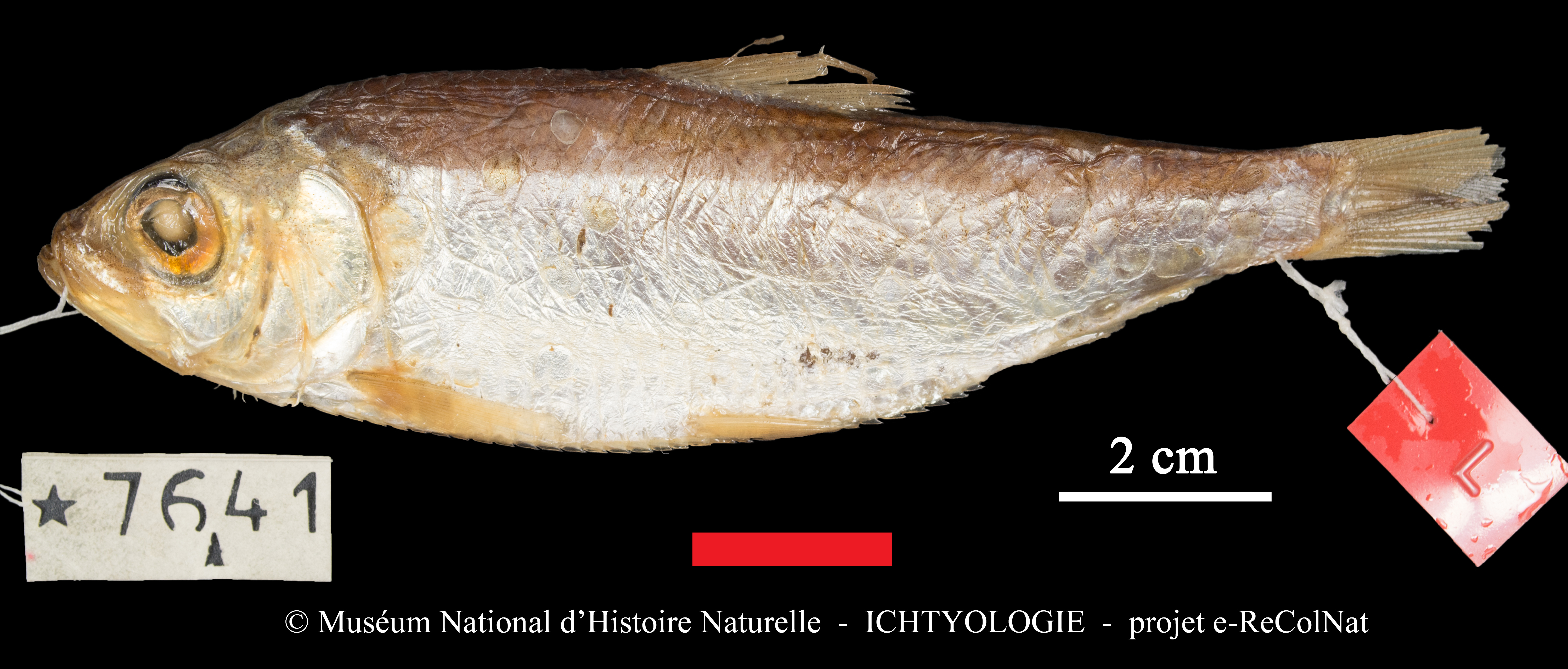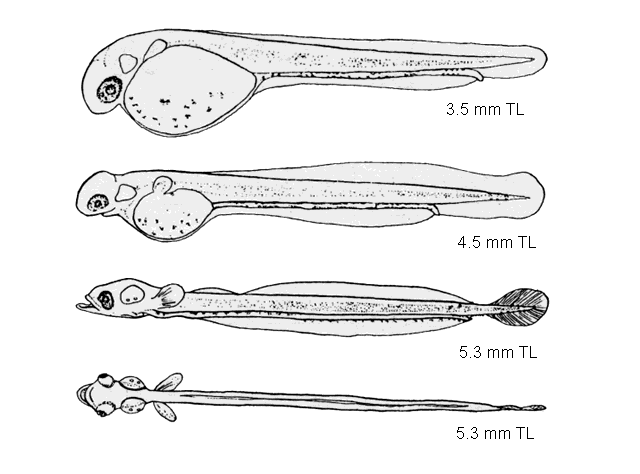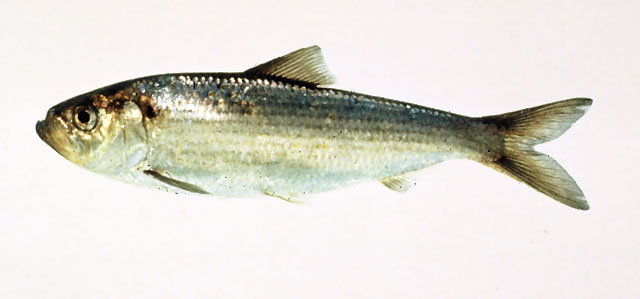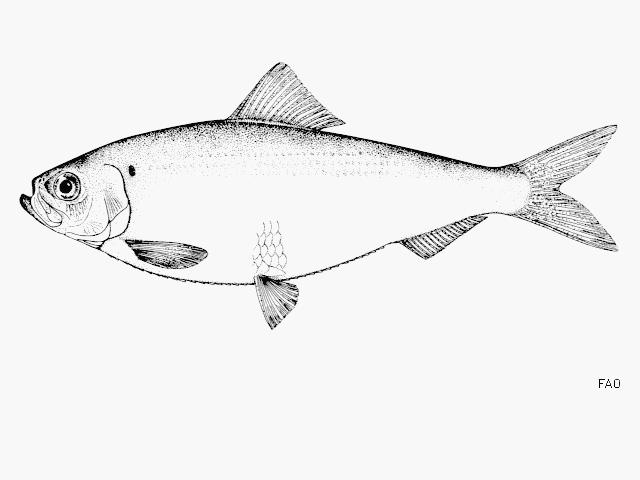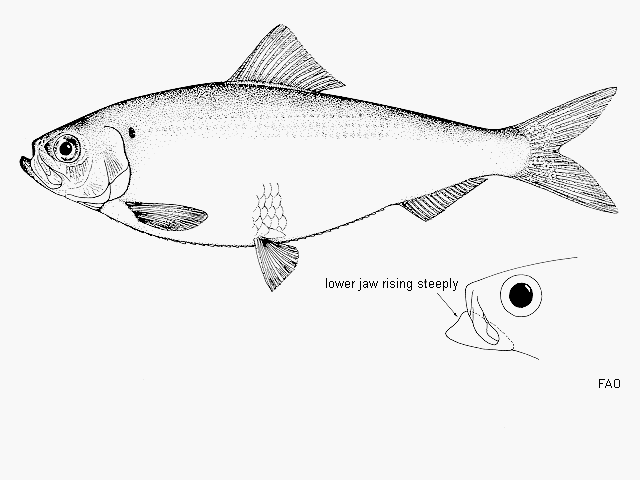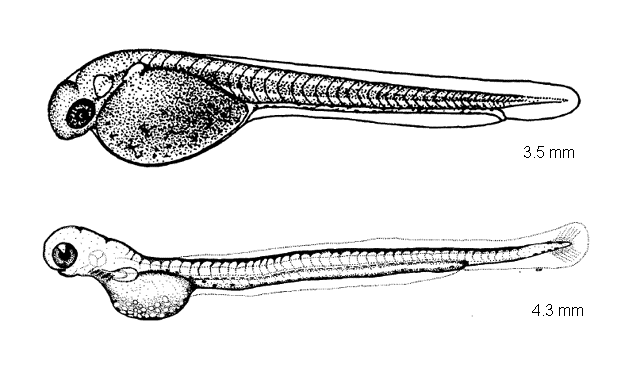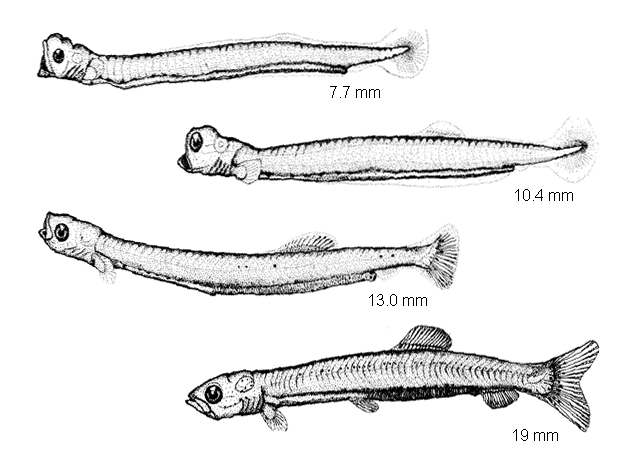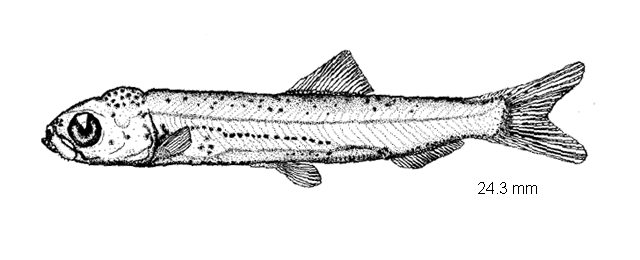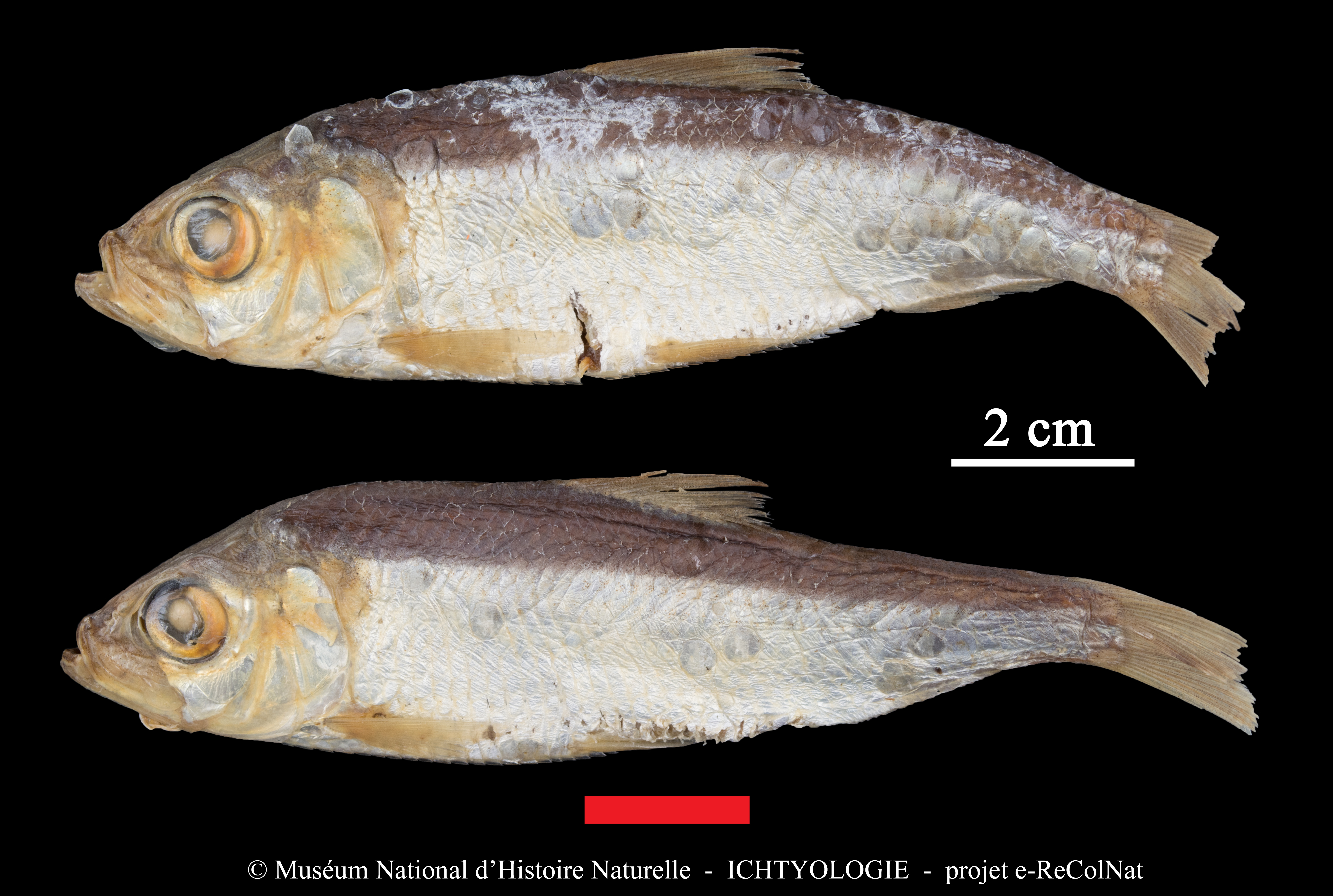Alosa pseudoharengus (Wilson, 1811)
Description
Dorsal spines (total): 0; Anal spines: 0. Moderately compressed, belly with a distinct keel of scutes. Lower jaw rising steeply within mouth; minute teeth present at front of jaws (disappearing with age). Lower gill rakers increasing with age. A dark spot on shoulder. Distinguished from A. aestivalis by its silvery peritoneum; eye larger than snout length; back greyish green on capture.
Common Names
No common names available.
Taxonomic Hierarchy
Kingdom: Animalia
Phylum: Chordata
Class: Teleostei
Order: Clupeiformes
Family: Alosidae
Genus: Alosa
Species: Alosa pseudoharengus (Wilson, 1811)
Climate Zone
Location
Biology
Occurs in open water over all bottom types (Ref. 86798). Movement of schooling adults apparently restricted to coastal areas proximal to natal estuaries (Ref. 4639). They migrate up rivers and even small streams to spawn in lakes and quiet stretches of rivers, then return to sea shortly after spawning (Ref. 4639); landlocked populations also ascend affluent rivers and streams. Larvae remain in vicinity of spawning grounds, forming schools at sizes less than 10 mm TL, within one to two weeks after hatching (Ref. 4639), then descend in summer and autumn or even as late as November or December. Feed on shrimps and small fishes; the young on diatoms, copepods and ostracods while in rivers. Utilized fresh, dried or salted, smoked and frozen; eaten fried (Ref. 9988). Also used for crab and lobster bait and sometimes for pet food (Ref. 9988). Parasites found are Acanthocephala, cestodes, trematodes and copepods. Overfishing, pollution and impassable dams cause the decline of stocks (Ref. 37032).
Habitat
freshwater
